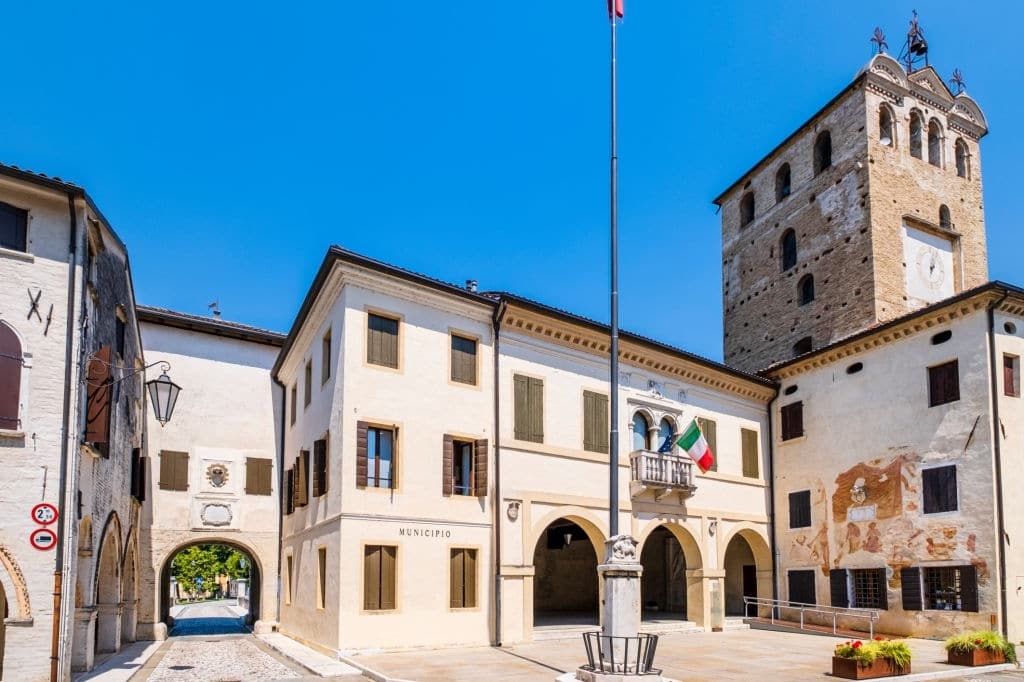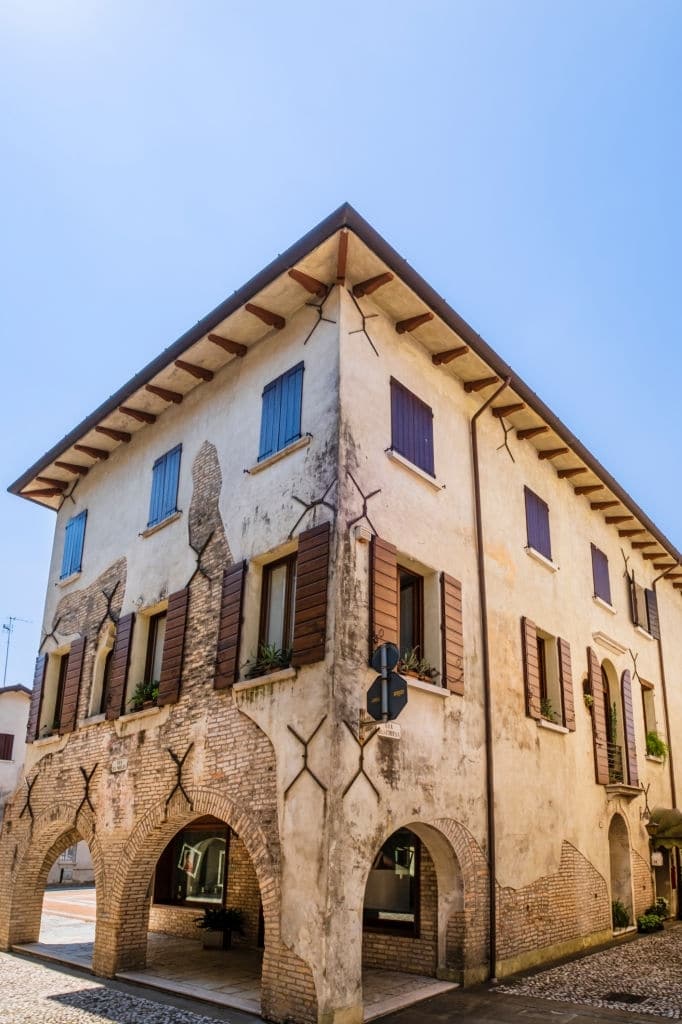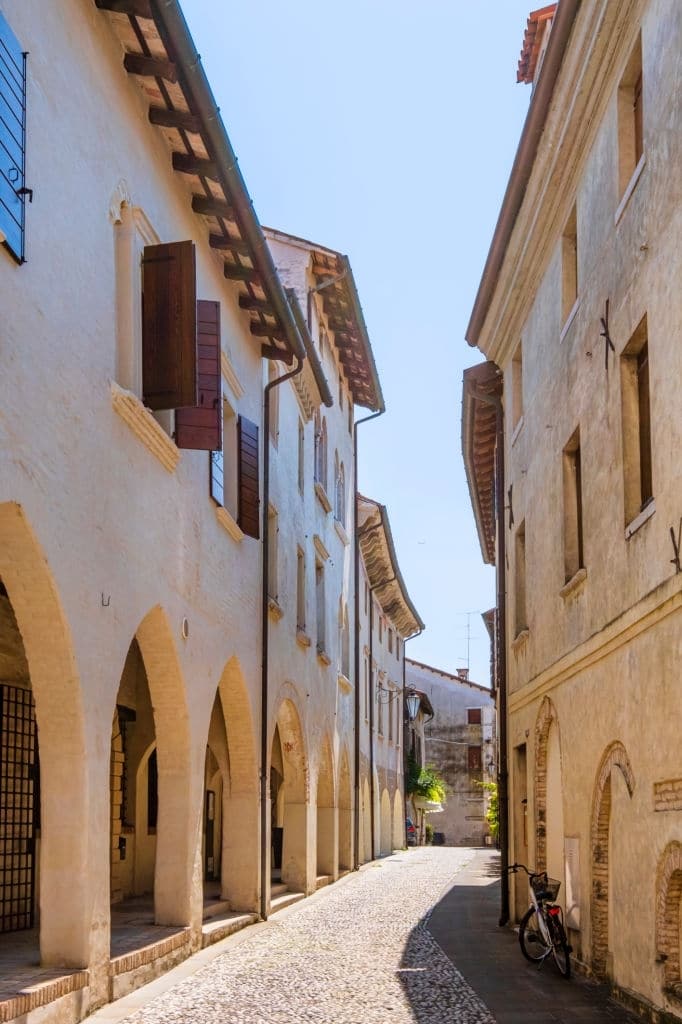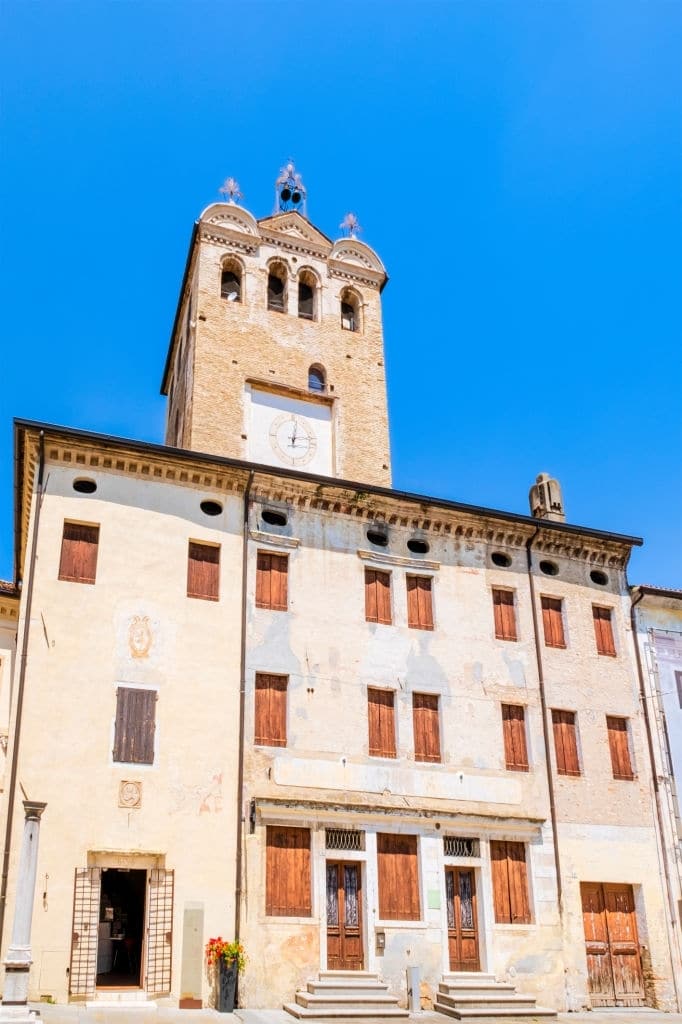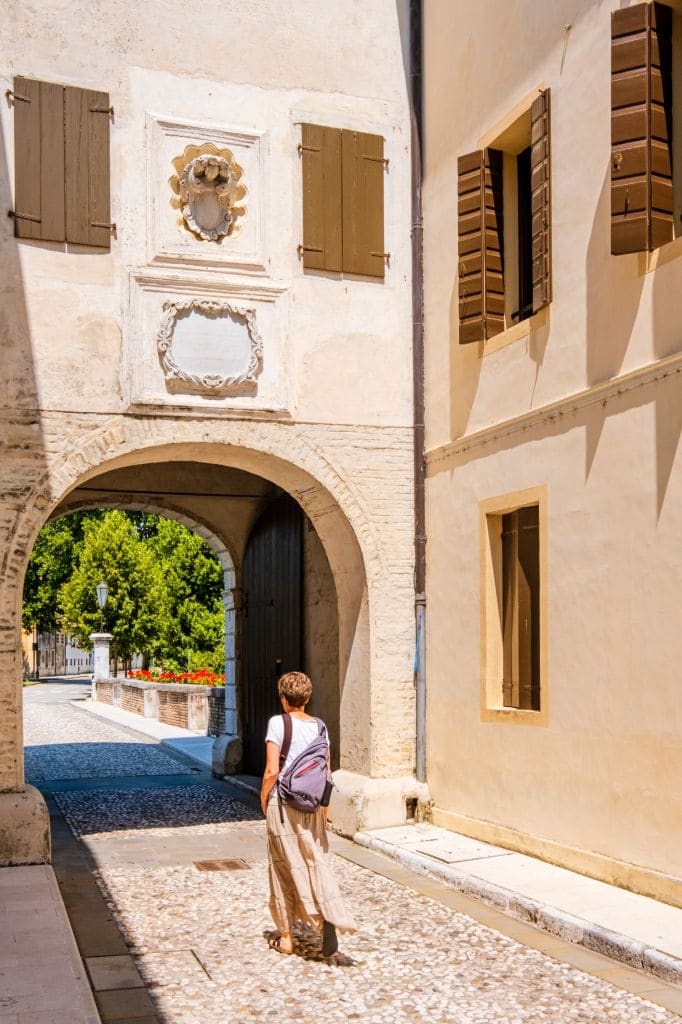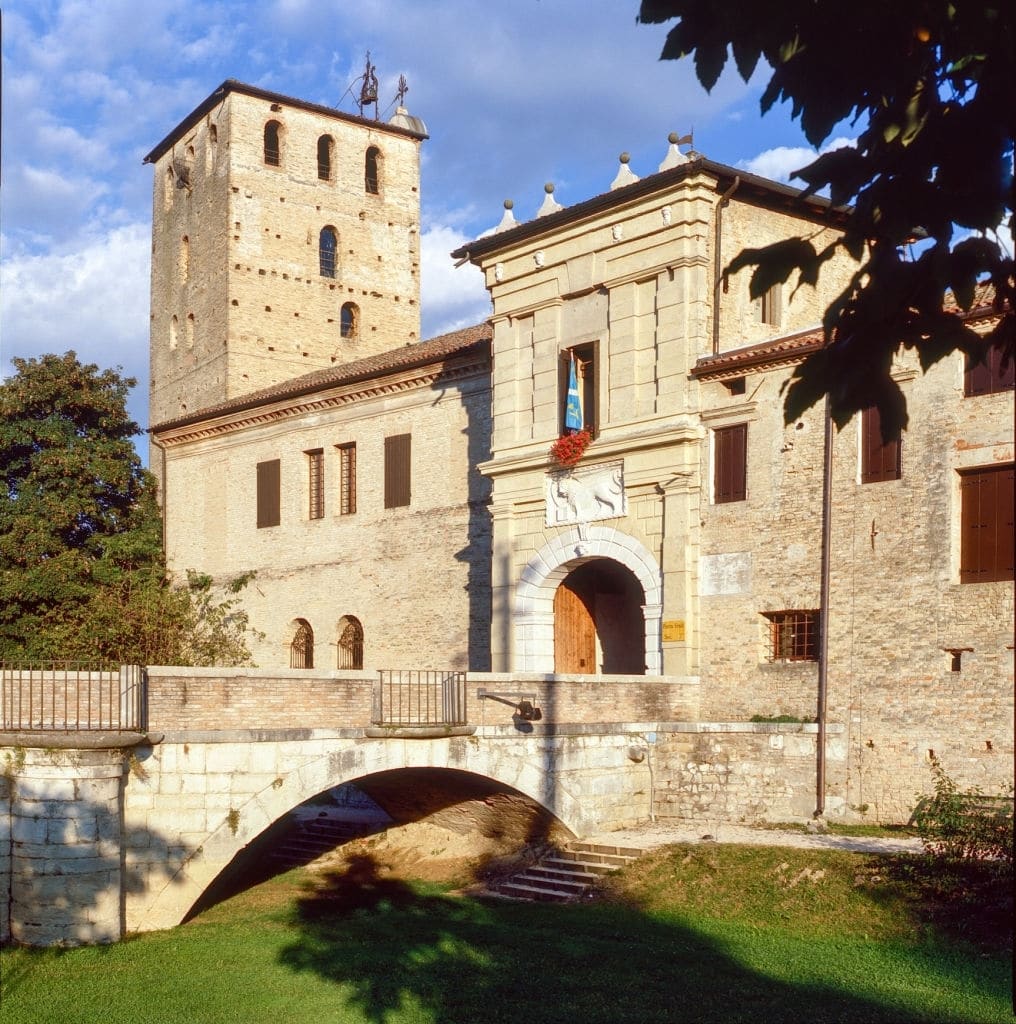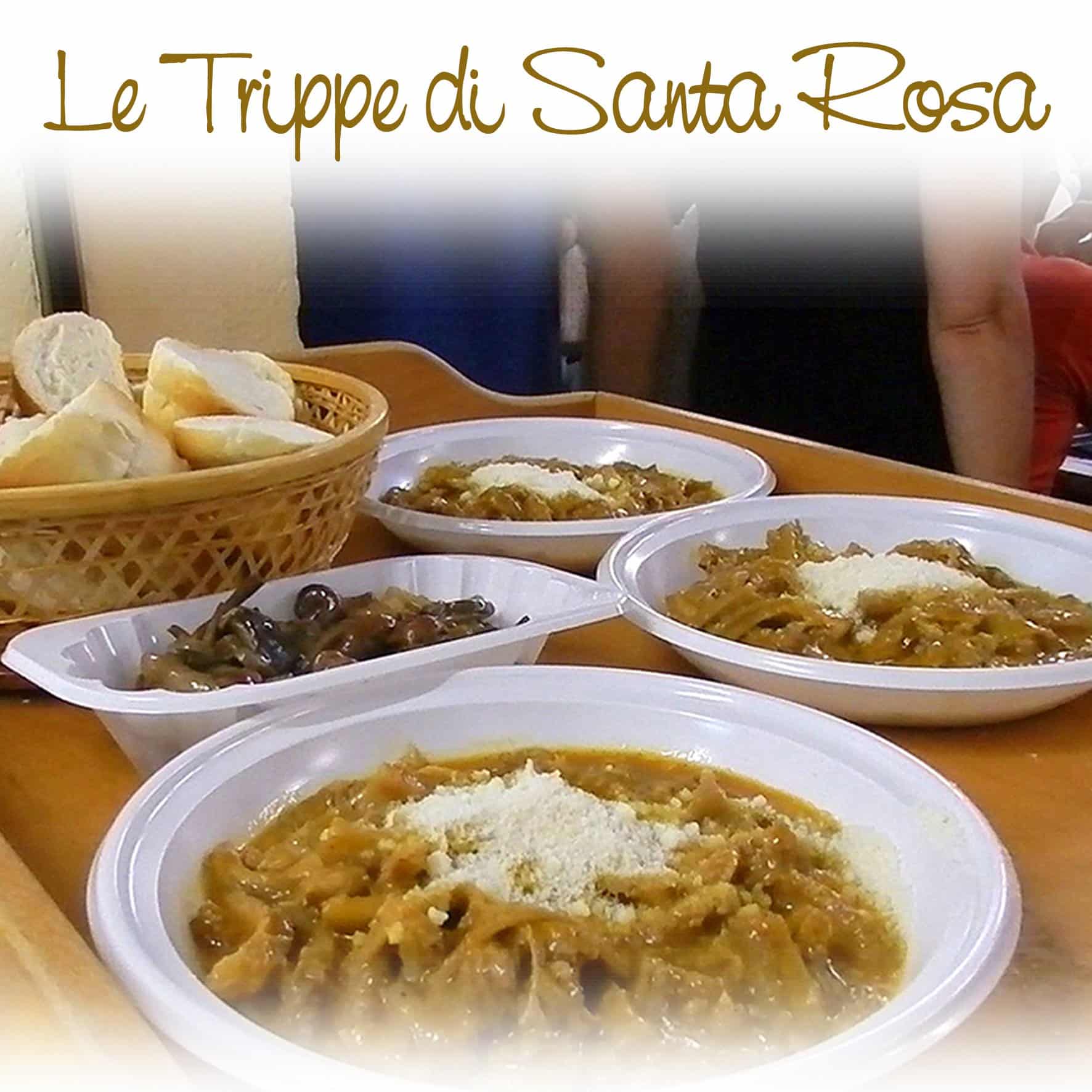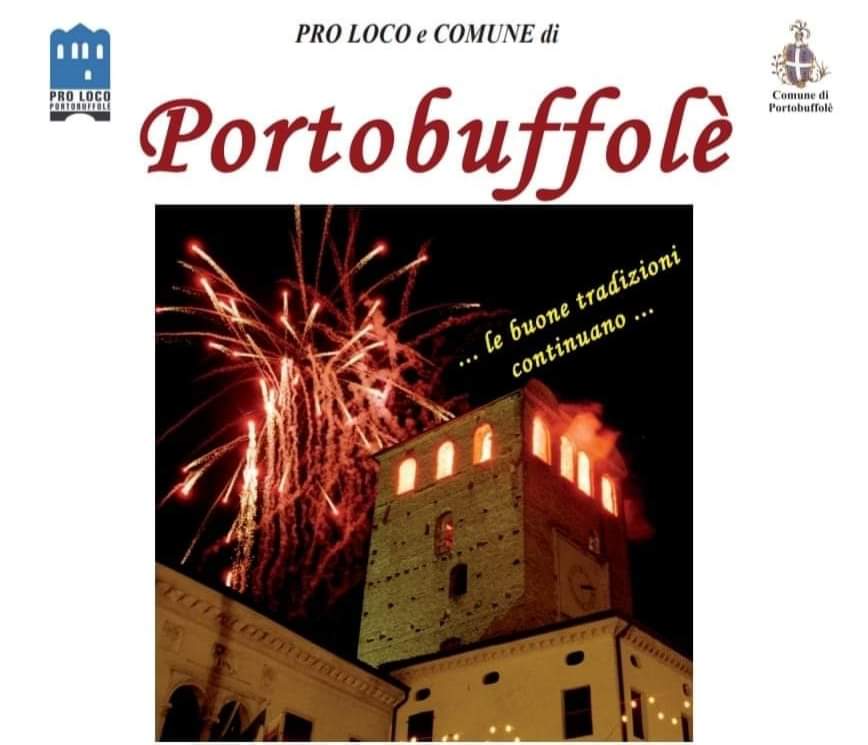Discovering Portobuffolè
The first traces of Portobuffolè are linked to its hamlet, Settimo, called by the Romans Septimum De Liquentia, in reference to the distance of 7 miles from the ancient Oderzo. Many people dominated the town during its history, from the Carraresi to the Patriarch of Aquileia, up to the Ripalto, Tolberto da Camino and Samaritana Malatesta. The Venetian dominion over Portobuffolè began in 1339 and coincided with the period of maximum splendor for the village, which was assigned a podestà, a coat of arms and the title of City.
Towards the end of the 18th century, especially after the Treaty of Campoformio, Portobuffolè was bitterly contested by the French and the Austrians.
Each of these lords and peoples left their mark on Portobuffolè, whose historic center is a real gem waiting to be discovered: passing through Porta Trevisana you reach the cobbled Piazza Beccaria, truly enchanting with its elegant palaces with frescoed facades, including Ca' Soler.
Not far from the square here is the fourteenth-century Casa Gaia Museum, residence of the famous poet Gaia da Camino: the woman, who has been attributed a dissolute life by gossip, is also mentioned by Dante in the Purgatory of the Divine Comedy, since the Supreme Poet was a guest of the woman's father, Gherardo da Camino. Casa Gaia preserves splendid frescoes of the 14th century, related to the surrounding territory of Portobuffolè but especially to the court life of that time, among ladies, armigers and pages. The building is also home to the "Museum of Cycling", with jerseys and memorabilia such as the woolen undershirt that Gino Bartali wore during the accident he had at his first Tour de France.
Walking through the historical center of Portobuffolè, it is possible to see the Municipal Tower dating back to the tenth century: it is made of bricks and it is the only one surviving of the seven towers that defended the town in the past. At the foot of the tower there is the Monte di Pietà, built during the Venetian period: on its facades you can admire frescoes depicting Peace, Charity, Justice and Hunger, but also the Lion of San Marco.
A village with a rich historical and enogastronomical heritage
Among the symbolic monuments of Portobuffolè there is Fontego, the ancient customs house where food and cereals were stored and on whose façade stand out the sixteenth century coats of arms of the podestà. To see then is the Duomo, which in reality in the past was a large synagogue: the building dates back to 1559 and contains a beautiful altarpiece of the Virgin made by Francesco da Milano, an organ with more than 400 pipes in tin and zinc and a valuable fifteenth-century crucifix of the German school.
Adjacent to the church is the Casa dell'Arcisinagogo, near which a typical Jewish candelabrum with seven arms was found. On its facade there is a plaque that remembers the condemnation to the stake to which a group of Jews of Portobuffolè was condemned, for the unjust accusation of infanticide. The sentence was actually executed but in Venice, in the very central Piazza San Marco.
Iconic is then the Friuli Bridge, built in stone in 1780 in place of an old wooden drawbridge: walking along this elegant bridge with two arches, you can see a Bocca della Verità (Mouth of Truth) and valuable balconies.
Just outside the city center there are historical places of great beauty such as the Church of San Rocco, with inside the Madonna della Seggiola dating back to 1524 and the neoclassical Oratory of Santa Teresa: the latter is located next to the elegant Villa Giustinian and inside shows all its splendor with decorated floors, frescoed ceilings and a crucifix by Brustolon. One of the best times to visit Portobuffolè is at the end of June, on the occasion of the historical commemoration "Portobuffolè, XIII century", when hundreds of people in period costumes parade through the streets of the village.
To know Portobuffolè also means to taste the typical products of the place: from veal kidney, to gnocchetti dressed with duck sauce, to the Portobuffolè soup made with mushrooms, pumpkin and bread. Not to be missed are also the wines of the territory, in particular the red wines of Alta Livenza.


